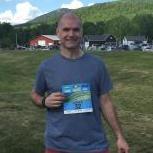Reputation Activity
-
 Malcolm Needs reacted to jtemple in Gel vs tube for DARA patientsWhat? All this time I have been using the wrong stuff! Ha! SPELL CHECK IS NOT YOUR FRIEND! 🤣🤣🤣🤣
Malcolm Needs reacted to jtemple in Gel vs tube for DARA patientsWhat? All this time I have been using the wrong stuff! Ha! SPELL CHECK IS NOT YOUR FRIEND! 🤣🤣🤣🤣
-
 Malcolm Needs got a reaction from Yanxia in Gel vs tube for DARA patientsUm, sorry Jason, but I think you mean Dithiothreitol (DTT), rather than Dichlorodiphenyltrichloroethane (DDT)!!!!!!!
Malcolm Needs got a reaction from Yanxia in Gel vs tube for DARA patientsUm, sorry Jason, but I think you mean Dithiothreitol (DTT), rather than Dichlorodiphenyltrichloroethane (DDT)!!!!!!!
-
 Malcolm Needs got a reaction from John C. Staley in Gel vs tube for DARA patientsUm, sorry Jason, but I think you mean Dithiothreitol (DTT), rather than Dichlorodiphenyltrichloroethane (DDT)!!!!!!!
Malcolm Needs got a reaction from John C. Staley in Gel vs tube for DARA patientsUm, sorry Jason, but I think you mean Dithiothreitol (DTT), rather than Dichlorodiphenyltrichloroethane (DDT)!!!!!!!
-
 Malcolm Needs got a reaction from Darin in Gel vs tube for DARA patientsUm, sorry Jason, but I think you mean Dithiothreitol (DTT), rather than Dichlorodiphenyltrichloroethane (DDT)!!!!!!!
Malcolm Needs got a reaction from Darin in Gel vs tube for DARA patientsUm, sorry Jason, but I think you mean Dithiothreitol (DTT), rather than Dichlorodiphenyltrichloroethane (DDT)!!!!!!!
-
 Malcolm Needs reacted to Darin in BloodBankTalk: LanThanks to the recent publications sent by @Malcolm Needs I knew this one! 😊
Malcolm Needs reacted to Darin in BloodBankTalk: LanThanks to the recent publications sent by @Malcolm Needs I knew this one! 😊
-
 Malcolm Needs got a reaction from bblover in Plasma transfusionsAGREED - and killing the patient in some circumstances!!!!!!!!!!!!!!!!!!
Malcolm Needs got a reaction from bblover in Plasma transfusionsAGREED - and killing the patient in some circumstances!!!!!!!!!!!!!!!!!!
-
 Malcolm Needs got a reaction from John C. Staley in Plasma transfusionsAGREED - and killing the patient in some circumstances!!!!!!!!!!!!!!!!!!
Malcolm Needs got a reaction from John C. Staley in Plasma transfusionsAGREED - and killing the patient in some circumstances!!!!!!!!!!!!!!!!!!
-
 Malcolm Needs reacted to CT1988 in BloodBankTalk: C(W)I just answered this question.
Malcolm Needs reacted to CT1988 in BloodBankTalk: C(W)I just answered this question.
My Score PASS
-
 Malcolm Needs got a reaction from AuntiS in Plasma transfusionsI agree Darin, it is almost certainly a dilutional effect, BUT, it could also be the effect of a soluble antigen (obviously not within the Duffy Blood Group System). If the antibody had a specificity within, for example, the Lewis Blood Group System, or the Chido/Rodgers Blood Group System, the antigen in the plasma could well adsorb out the circulating antibody. That having been said, this explanation is FAR less likely than your suggestion of the dilutional effect.
Malcolm Needs got a reaction from AuntiS in Plasma transfusionsI agree Darin, it is almost certainly a dilutional effect, BUT, it could also be the effect of a soluble antigen (obviously not within the Duffy Blood Group System). If the antibody had a specificity within, for example, the Lewis Blood Group System, or the Chido/Rodgers Blood Group System, the antigen in the plasma could well adsorb out the circulating antibody. That having been said, this explanation is FAR less likely than your suggestion of the dilutional effect.
-
 Malcolm Needs reacted to John C. Staley in Plasma transfusionsHow many units of uncrossmatched blood did they receive? How active were they bleeding? How much later did the other hospital preform their own T&S? Inquiring minds want to know!!! 😉
Malcolm Needs reacted to John C. Staley in Plasma transfusionsHow many units of uncrossmatched blood did they receive? How active were they bleeding? How much later did the other hospital preform their own T&S? Inquiring minds want to know!!! 😉
-
 Malcolm Needs reacted to Cliff in A little about meI rarely post about me, or my family.
Malcolm Needs reacted to Cliff in A little about meI rarely post about me, or my family.
I was raised by a single mom from 2 until I was about 10. That was probably really hard for her in the 60s. Whenever I ask her, she just says it wasn't so hard.
We had a lot of roommates to help with the cost of apartments, one was Georganne (Giorgi Baino Sr.). She seemed to be around the longest. I really liked her, she was like an aunt to me.
Maybe 10 or more years ago, we got back in touch - Sadly, just on Facebook. I am going to try to have a video chat with her to catch up.
Anyhow, it seems my mom wrote a poem about me when I was a kid, and Georganne has always played guitar. The song was about me riding bikes, I never heard it until yesterday. For those that know me, you know I've been a cyclist (avid at times) for the last 15 years.
She put the poem to music and sent it to me yesterday. I cried.
Here it is if you're interested.
I cried.
-
 Malcolm Needs reacted to bblover in Plasma transfusionsThanks for all your input
Malcolm Needs reacted to bblover in Plasma transfusionsThanks for all your input
-
 Malcolm Needs got a reaction from Yanxia in Plasma transfusionsI agree Darin, it is almost certainly a dilutional effect, BUT, it could also be the effect of a soluble antigen (obviously not within the Duffy Blood Group System). If the antibody had a specificity within, for example, the Lewis Blood Group System, or the Chido/Rodgers Blood Group System, the antigen in the plasma could well adsorb out the circulating antibody. That having been said, this explanation is FAR less likely than your suggestion of the dilutional effect.
Malcolm Needs got a reaction from Yanxia in Plasma transfusionsI agree Darin, it is almost certainly a dilutional effect, BUT, it could also be the effect of a soluble antigen (obviously not within the Duffy Blood Group System). If the antibody had a specificity within, for example, the Lewis Blood Group System, or the Chido/Rodgers Blood Group System, the antigen in the plasma could well adsorb out the circulating antibody. That having been said, this explanation is FAR less likely than your suggestion of the dilutional effect.
-
 Malcolm Needs got a reaction from Darin in Plasma transfusionsI agree Darin, it is almost certainly a dilutional effect, BUT, it could also be the effect of a soluble antigen (obviously not within the Duffy Blood Group System). If the antibody had a specificity within, for example, the Lewis Blood Group System, or the Chido/Rodgers Blood Group System, the antigen in the plasma could well adsorb out the circulating antibody. That having been said, this explanation is FAR less likely than your suggestion of the dilutional effect.
Malcolm Needs got a reaction from Darin in Plasma transfusionsI agree Darin, it is almost certainly a dilutional effect, BUT, it could also be the effect of a soluble antigen (obviously not within the Duffy Blood Group System). If the antibody had a specificity within, for example, the Lewis Blood Group System, or the Chido/Rodgers Blood Group System, the antigen in the plasma could well adsorb out the circulating antibody. That having been said, this explanation is FAR less likely than your suggestion of the dilutional effect.
-
 Malcolm Needs got a reaction from applejw in Do you use R1wR1 cells to rule out C antigen on gel panel?We have seen this phenomenon from time to time, albeit rarely. We use R1wR1 red cells with all of our antibody identifications, purely because it is always cell 1 in the panel! We also, however, use two R1R1 panel cells and an r'r panel cell.
Malcolm Needs got a reaction from applejw in Do you use R1wR1 cells to rule out C antigen on gel panel?We have seen this phenomenon from time to time, albeit rarely. We use R1wR1 red cells with all of our antibody identifications, purely because it is always cell 1 in the panel! We also, however, use two R1R1 panel cells and an r'r panel cell.
I'm not too sure why we get the odd sample that reacts like that, because the C antigen on the R1wR1 panel cell is not that much weaker than the C antigen on the R1R1 panel cells, and certainly no weaker than that on the r'r panel cells.
Remember that the "w" of "Cw" stands for "Willis", and not "weak", as it was named after the donor who caused the immunisation to the antigen in the first example of anti-Cw described (something I forgot a few years back in an article I wrote, much to my embarrassment, if that is any solace to you) and that RH8 (RHCw) is allelic to both RH9 (RHCx) and RH51 (MAR), and not to either RH2 (RHC) or RH4 (RHc). Therefore, any weakening must be due to steric hinderance, or something similar.
:confuse::confuse:
-
 Malcolm Needs got a reaction from Yanxia in Do you use R1wR1 cells to rule out C antigen on gel panel?We have seen this phenomenon from time to time, albeit rarely. We use R1wR1 red cells with all of our antibody identifications, purely because it is always cell 1 in the panel! We also, however, use two R1R1 panel cells and an r'r panel cell.
Malcolm Needs got a reaction from Yanxia in Do you use R1wR1 cells to rule out C antigen on gel panel?We have seen this phenomenon from time to time, albeit rarely. We use R1wR1 red cells with all of our antibody identifications, purely because it is always cell 1 in the panel! We also, however, use two R1R1 panel cells and an r'r panel cell.
I'm not too sure why we get the odd sample that reacts like that, because the C antigen on the R1wR1 panel cell is not that much weaker than the C antigen on the R1R1 panel cells, and certainly no weaker than that on the r'r panel cells.
Remember that the "w" of "Cw" stands for "Willis", and not "weak", as it was named after the donor who caused the immunisation to the antigen in the first example of anti-Cw described (something I forgot a few years back in an article I wrote, much to my embarrassment, if that is any solace to you) and that RH8 (RHCw) is allelic to both RH9 (RHCx) and RH51 (MAR), and not to either RH2 (RHC) or RH4 (RHc). Therefore, any weakening must be due to steric hinderance, or something similar.
:confuse::confuse:
-
 In my opinion, if you have:
In my opinion, if you have:
A cold antibody (not pathological), and
Have done the workup to show that there is no other antibody present (i.e. a clinically significant antibody such as anti-E), and
Your LIS dictionary set up so that your reported antibody is not deemed as clinically significant
You can set it up so that the computer (electronic) crossmatch can be used.
If it is a pathological antibody, we use incompatible (i.e. Least incompatible in Meditech)
-
 Malcolm Needs got a reaction from Darin in Biomedical Scientist Day 2025 UK.Today is Biomedical Scientist Day 2025 UK. I would like to wish best wishes to all laboratory staff throughout the world.
Malcolm Needs got a reaction from Darin in Biomedical Scientist Day 2025 UK.Today is Biomedical Scientist Day 2025 UK. I would like to wish best wishes to all laboratory staff throughout the world.
-
 Malcolm Needs got a reaction from Cliff in Biomedical Scientist Day 2025 UK.Today is Biomedical Scientist Day 2025 UK. I would like to wish best wishes to all laboratory staff throughout the world.
Malcolm Needs got a reaction from Cliff in Biomedical Scientist Day 2025 UK.Today is Biomedical Scientist Day 2025 UK. I would like to wish best wishes to all laboratory staff throughout the world.
-
 Malcolm Needs got a reaction from Prince Domson in Non specific antibodyIt is most unlikely to be anti-f, as this specificity will not react with either R1R1 or R2R2 red cells (I presume that you are using both antibody screening cells and antibody identification panel cells that have these phenotypes represented).
Malcolm Needs got a reaction from Prince Domson in Non specific antibodyIt is most unlikely to be anti-f, as this specificity will not react with either R1R1 or R2R2 red cells (I presume that you are using both antibody screening cells and antibody identification panel cells that have these phenotypes represented).
Anti-f reacts with red cells where the c and e antigens are the result of an RHCE*ce haplotype where, for want of a better way of putting it, the c and e antigens are the result of the RHc and RHe genes being in the cis position - NOTE THAT THIS TERMINOLOGY IS (KNOWINGLY) WRONG!
Like all Rh antibodies, anti-f reacts most strongly with its cognate antigen on red cells that have been treated with a proteolytic enzyme (such as papain or ficin), but will very often react with untreated red cells by IAT.
-
 Malcolm Needs reacted to Darin in Welcome DarinThank you so much! I've been perusing the site for a few years and thought, hey, why don't I sign up! LOL
Malcolm Needs reacted to Darin in Welcome DarinThank you so much! I've been perusing the site for a few years and thought, hey, why don't I sign up! LOL
I'm the BB Lead at a smaller hospital in AZ and have 30 years experience.
Looking forward to learning more here and, hopefully, even providing a few answers along the way.
-
 Malcolm Needs got a reaction from Cliff in General Lab: PathLabTalk HistoryI just answered this question.
Malcolm Needs got a reaction from Cliff in General Lab: PathLabTalk HistoryI just answered this question.
My Score PASS
-
 Malcolm Needs reacted to Neil Blumberg in Need AdviceWas the patient transfused? If not, hyper hemolysis is less likely. Sounds like mechanical causes are most likely.
Malcolm Needs reacted to Neil Blumberg in Need AdviceWas the patient transfused? If not, hyper hemolysis is less likely. Sounds like mechanical causes are most likely.
-
 Malcolm Needs got a reaction from MaeveQ in Welcome MaeveQWelcome to this SUPREMELY WONDERFUL site MaeveQ. ENJOY!
Malcolm Needs got a reaction from MaeveQ in Welcome MaeveQWelcome to this SUPREMELY WONDERFUL site MaeveQ. ENJOY!
-
 Malcolm Needs got a reaction from Ally in Suspected Anti-D + Anti-C vs. Anti-G: Separation/Differentiating Difficulty — Has Anyone Seen Similar Results? Case Comparisons? Thoughts...Thank you for your exceptionally kind words DLabGirl, and by all means use the lecture as you wish. The same goes for anyone else who might want to use it, with the proviso that you a) realise that it is a bit "long in the tooth", and b) I did mean that we, in the UK, would still look to ensure that there really is an anti-D present, before we do not recommend giving anti-D immunoglobulin.
Malcolm Needs got a reaction from Ally in Suspected Anti-D + Anti-C vs. Anti-G: Separation/Differentiating Difficulty — Has Anyone Seen Similar Results? Case Comparisons? Thoughts...Thank you for your exceptionally kind words DLabGirl, and by all means use the lecture as you wish. The same goes for anyone else who might want to use it, with the proviso that you a) realise that it is a bit "long in the tooth", and b) I did mean that we, in the UK, would still look to ensure that there really is an anti-D present, before we do not recommend giving anti-D immunoglobulin.






